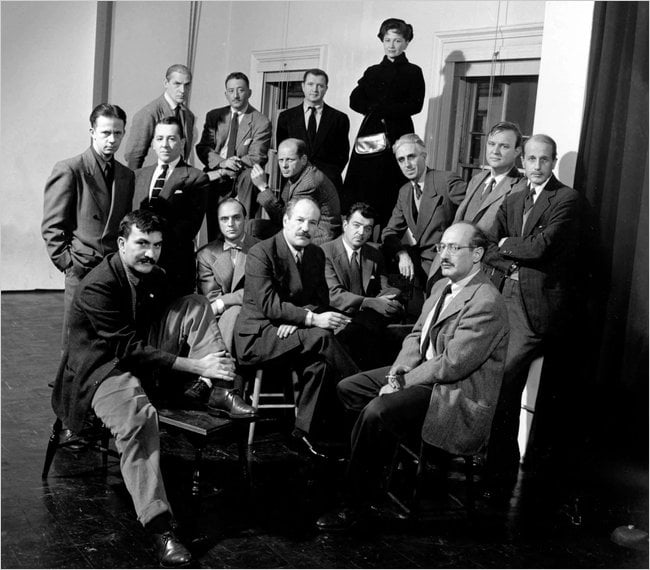Art World
7 Reasons to Love Hedda Sterne on Her Birthday
"Hedda was always searching, never satisfied," Betty Parsons said.
"Hedda was always searching, never satisfied," Betty Parsons said.
Daniela Rios

The artist Hedda Sterne was not afraid to make a statement. She was the only woman included in the Irascible 18, a group of American Abstract artists who protested against the Metropolitan Museum of Art’s exhibition, American Painting Today 1950, through an open letter written on May 20 and published on the front page of the New York Times on May 22. “Hedda was always searching, never satisfied,” her dealer Betty Parsons told the New York Times.
Born August 4, 1910, in Romania, Sterne lived most of her early years studying art in Vienna and often taking trips to Paris. When she married, she left Europe for America and settled in Manhattan, where her art was beginning to get some attention. She died in 2011, in her New York City home.
Sterne’s artistic style was constantly changing, and she experimented with a variety of forms and mediums, from diary entries on checkerboard grids to more traditional portraits of family and friends. She was, herself, an unpredictable work of art.
By joining the Abstract Expressionists, better known as The Irascibles or the Irascible 18, she became the only woman among a group of fellow artists protesting against an exhibition that claimed to show American artwork. However, the group argued in their open letter addressed to Roland L. Redmond, the president of the Metropolitan Museum of Art, that “the curators of the show were only promoting the most conservative kind of American painting and were ‘hostile to advance art.'”

The now-famous 1951 Life magazine photograph of the Abstract Expressionists’ leading lights. Hedda Sterne is in the back, standing.
Regardless of the controversy, Sterne was much more than simply a token female artist. She was always looking forward, to new horizons. “When I traveled to the United States, I didn’t only travel in space, I also traveled in time,” she told BOMB magazine in a 1992 interview. “It was a tremendous cultural leap, especially in the role of women in the world.” With new possibilities, she created work that challenged a modern audience ready for the world beyond traditional painting.
Here are a few more reasons to love and admire her.
1. She lived to be 100.
“After so many years of working unceasingly, and enthusiastically, being idle is a tremendous effort of concentration and adjustment. It’s not just doing nothing. It’s being and existing in a certain way. In a way old age is a little bit like that. It has its beauties,” she said, according to Art in America.
2. She first saw a Surrealist work at the tender age of six.
“The very first painting show I ever saw, at the age of six, was Victor Brauner’s, a Surrealist. And then the Constructivists with the shaped canvases, infinitely more daring for that time than lots of things that are done now,” she told BOMB magazine.
3. She was the last surviving artist from the LIFE magazine photograph.
“They all were very furious that I was in it because they all were sufficiently macho to think that the presence of a woman took away from the seriousness of it all,” said Sterne.
4. She escaped from Europe in 1941.
“…the ship I was supposed to come in was sunk by submarines. And I had to wait and I came on another one. It was in October 1941, and America was very difficult about visas. It was quite a miracle that I came,” Sterne said, according to Art in America.
5. She would rather not be remembered for the photo.
“I am known more for that darn photo than for eighty years of work. If I had an ego, it would bother me,” Sterne said, according to a review of “The Last Irascible.”
6. Jazz was an influence.
“Music has had a tremendous part of my life. All types, including jazz,” she told Art in America.
7. Her diary turned into one of her biggest projects.
“I had a large canvas, and I divided it into days and months, and each day I put in one quote I was particularly fond of that I found in a book. And that was the diary,” according to Art in America.